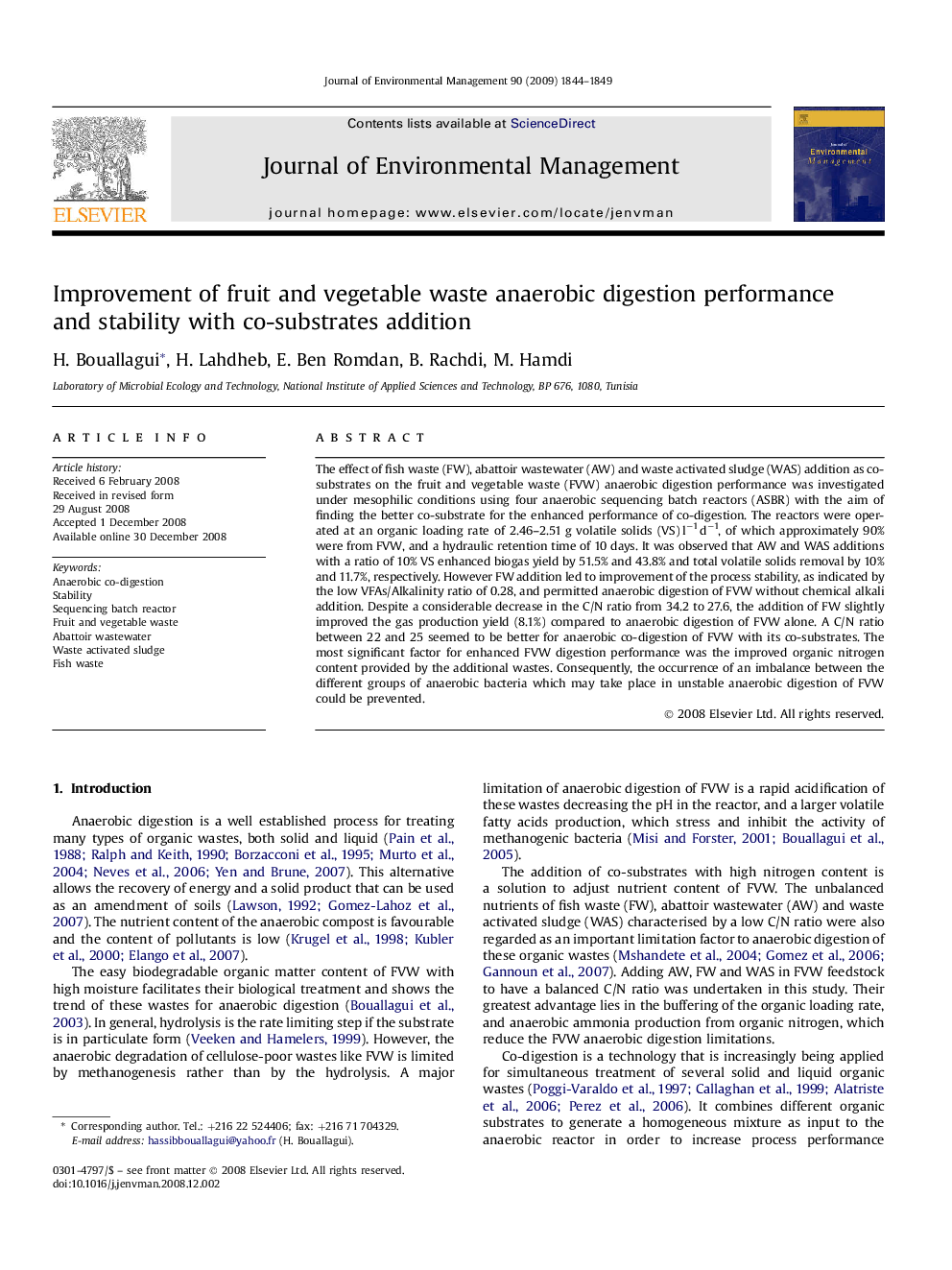| Article ID | Journal | Published Year | Pages | File Type |
|---|---|---|---|---|
| 1057376 | Journal of Environmental Management | 2009 | 6 Pages |
The effect of fish waste (FW), abattoir wastewater (AW) and waste activated sludge (WAS) addition as co-substrates on the fruit and vegetable waste (FVW) anaerobic digestion performance was investigated under mesophilic conditions using four anaerobic sequencing batch reactors (ASBR) with the aim of finding the better co-substrate for the enhanced performance of co-digestion. The reactors were operated at an organic loading rate of 2.46–2.51 g volatile solids (VS) l−1 d−1, of which approximately 90% were from FVW, and a hydraulic retention time of 10 days. It was observed that AW and WAS additions with a ratio of 10% VS enhanced biogas yield by 51.5% and 43.8% and total volatile solids removal by 10% and 11.7%, respectively. However FW addition led to improvement of the process stability, as indicated by the low VFAs/Alkalinity ratio of 0.28, and permitted anaerobic digestion of FVW without chemical alkali addition. Despite a considerable decrease in the C/N ratio from 34.2 to 27.6, the addition of FW slightly improved the gas production yield (8.1%) compared to anaerobic digestion of FVW alone. A C/N ratio between 22 and 25 seemed to be better for anaerobic co-digestion of FVW with its co-substrates. The most significant factor for enhanced FVW digestion performance was the improved organic nitrogen content provided by the additional wastes. Consequently, the occurrence of an imbalance between the different groups of anaerobic bacteria which may take place in unstable anaerobic digestion of FVW could be prevented.
